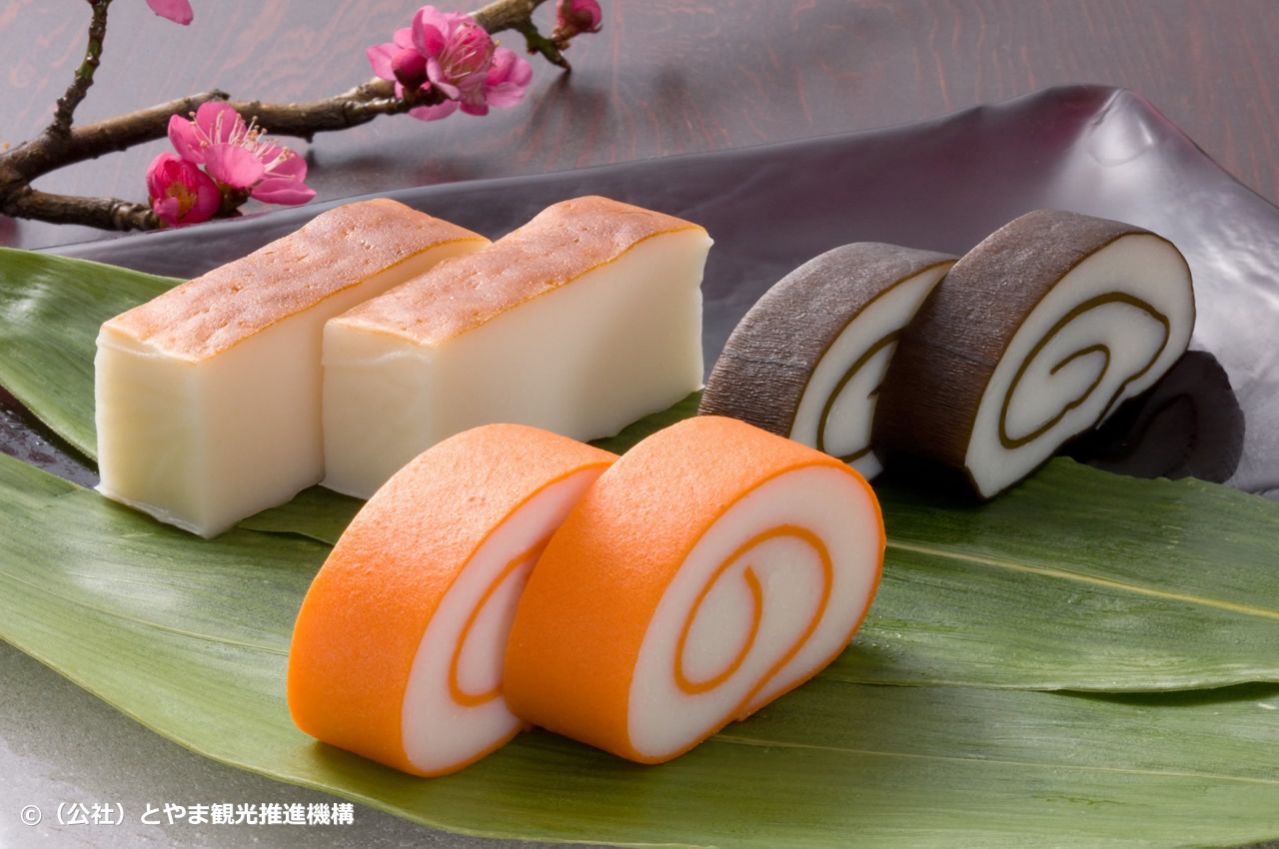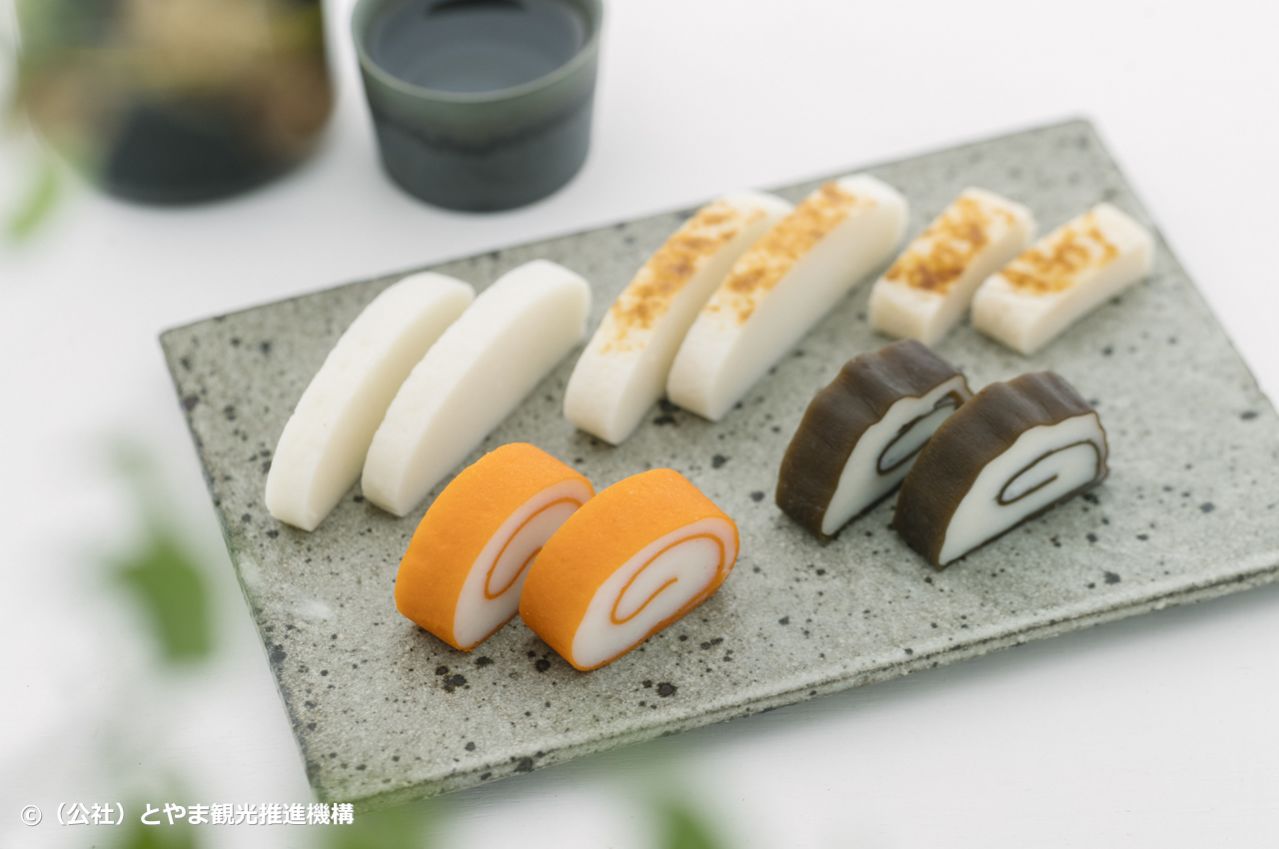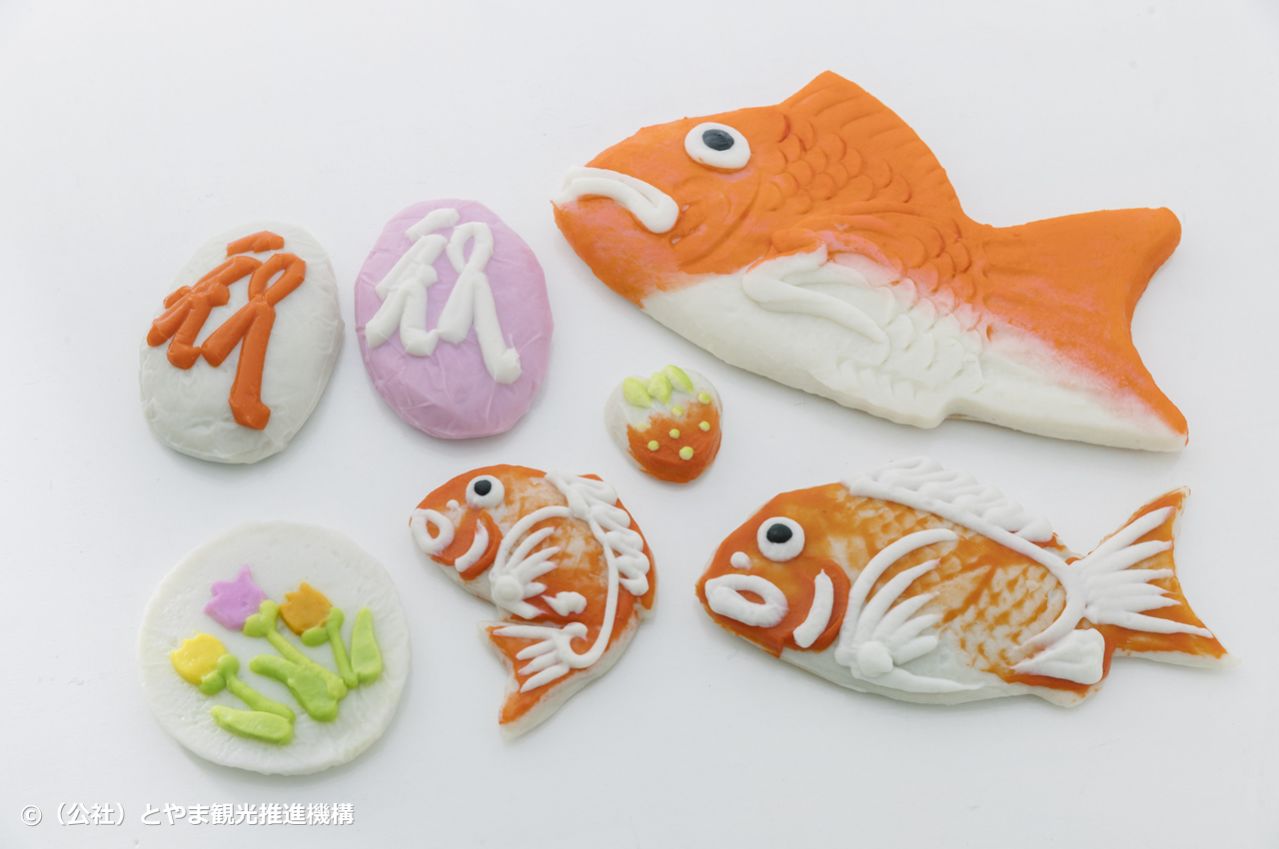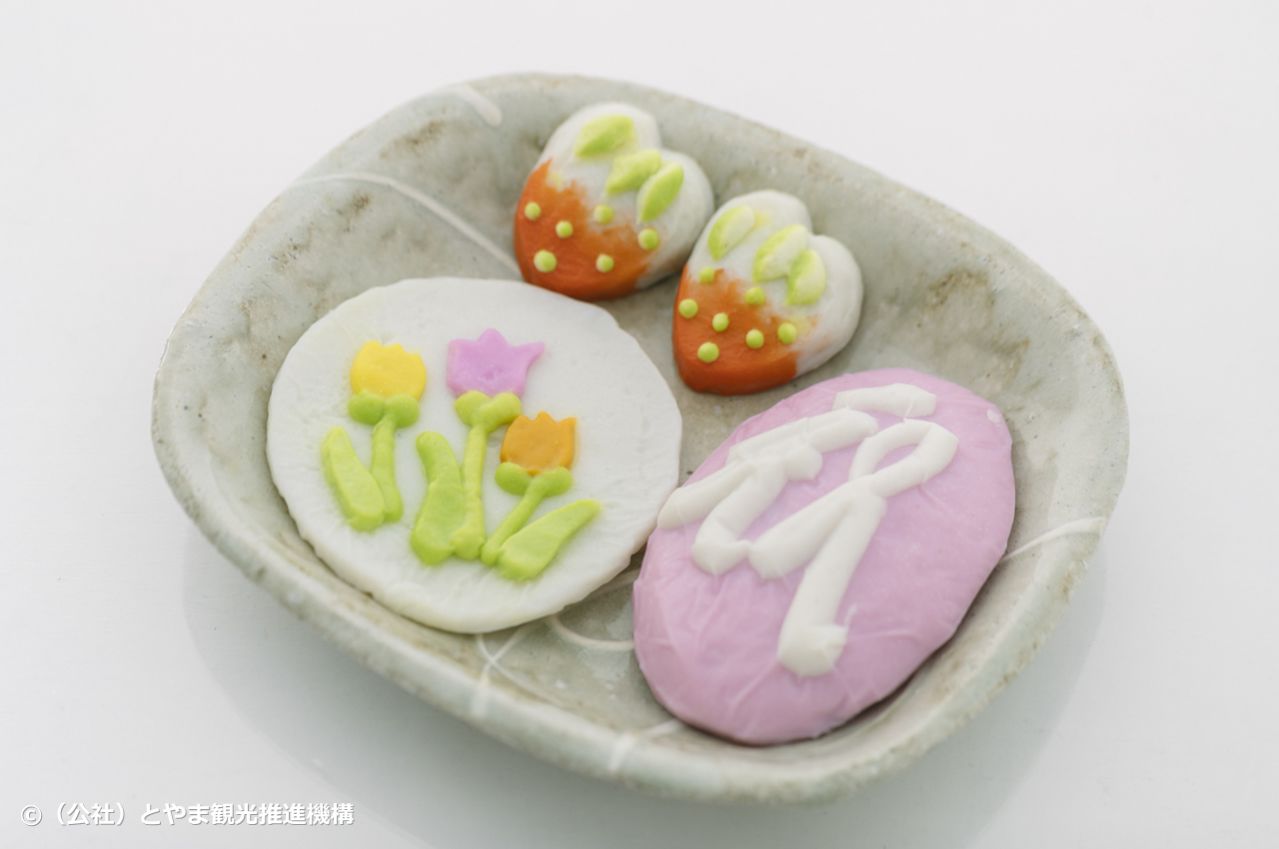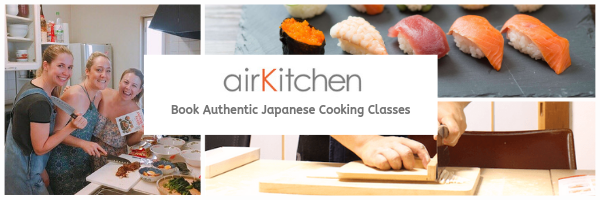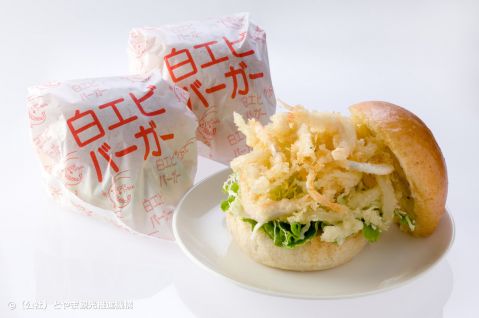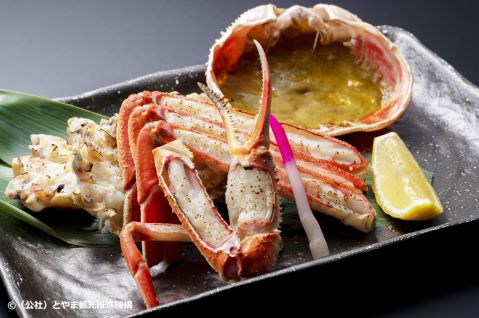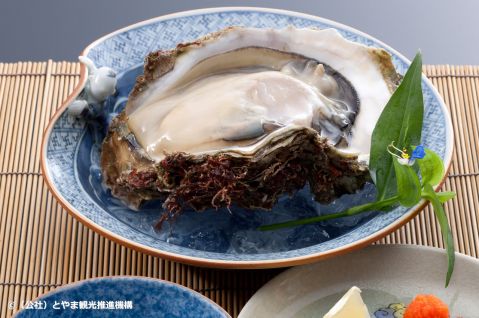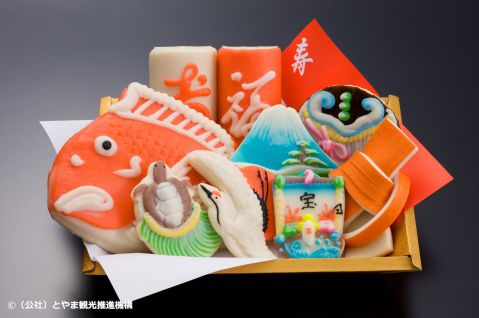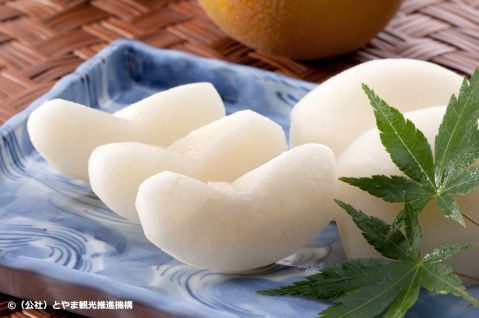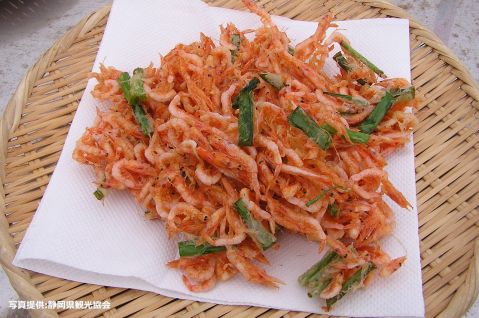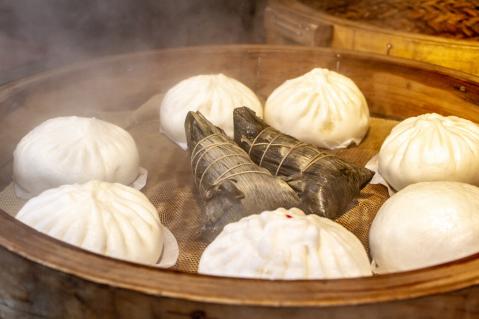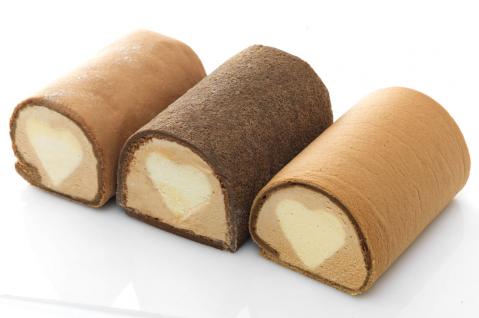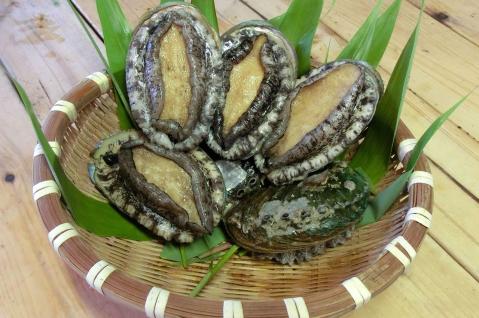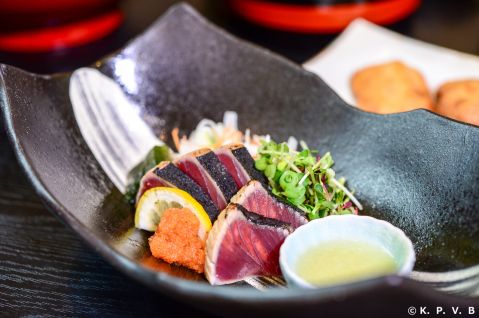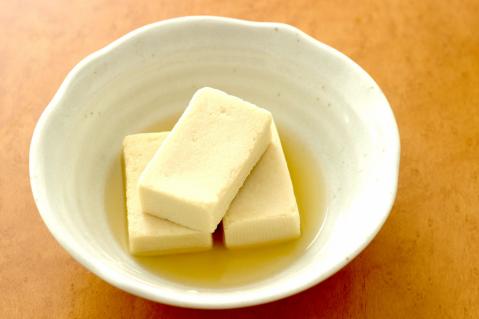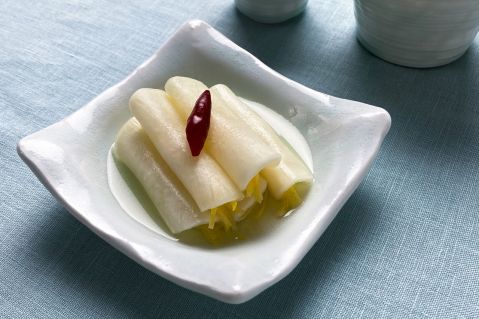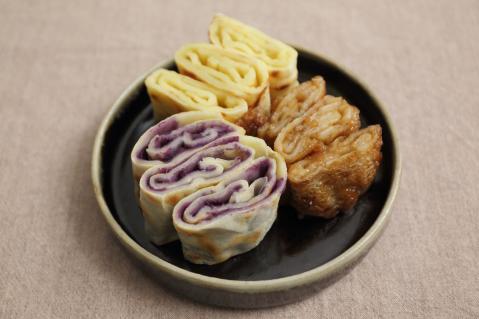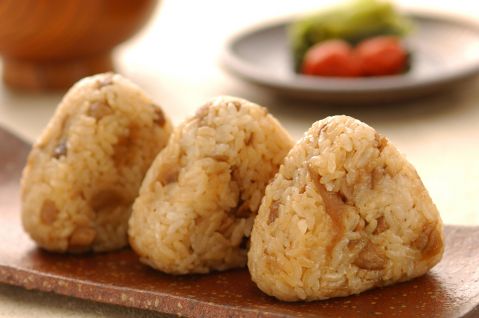Kamaboko (Fish Cake)
A cherished taste rooted in the tradition of Toyama
About Kamaboko (Fish Cake)
Kamaboko (かまぼこ, fish cake) from Toyama Prefecture is widely recognized for its unique "Uzumaki Kamaboko" varieties, characterized by their spiraling shapes and colors that enhance their visual appeal and flavor. Derived from culinary inspiration, these inventive designs aim to bring both delicious taste and aesthetic enjoyment.
Traditionally a humble and familiar food, kamaboko has not always been fully appreciated for its depth and uniqueness. Over the generations, Toyama has developed its own distinctive forms and flavors of kamaboko. Beyond its appearance, it is regarded as a healthy food, providing a low-fat, low-calorie, and high-protein option loved by many.
■ A Tradition Shaped by the Bounty of the Sea
Toyama’s kamaboko tradition owes much to the rich diversity of fish in Toyama Bay. A variety of white-fleshed fish such as horse mackerel, flying fish, barracuda, cutlassfish, grenadier, and Alaska pollock were caught in abundance throughout the year. Fish paste (surimi) made from these seasonal catches showcased their rich flavors, irrespective of fish size or type. This natural abundance fostered Toyama’s distinct kamaboko culture.
In recent years, dwindling marine resources and advances in freezing technology have introduced frozen surimi as a standard ingredient across Japan. Despite these changes, Toyama’s kamaboko continues to highlight the umami of diverse fish enhanced by konbu (kelp) and vibrant decorative colors, ensuring that its unique culture persists for future generations.
■ The Custom of Wedding Kamaboko
In Toyama, kamaboko holds a special place in wedding traditions. It is customarily given as a gift to wedding guests, who then cut and share it with relatives, neighbors, and friends. This act symbolizes spreading joyous blessings and gaining their approval.
To deepen happiness, traditional wedding kamaboko is often large and sculpted into auspicious shapes such as sea bream, cranes, turtles, or Mount Fuji. However, modern preferences for convenience have made smaller-sized wedding kamaboko increasingly popular.
■ “Maki Kamaboko” Without a Wooden Board
A distinctive feature of Toyama’s kamaboko is its lack of the wooden “board” typical of other regions' fish cakes. Instead of shaping the fish paste on a wooden board like “ita-kamaboko,” Toyama’s style involves spreading the paste into a flat sheet, similar to rolled omelets, and then steaming it.
One prevalent style is “Iro-Maki Kamaboko,” where thin layers of colored fish paste are rolled together, creating vibrant spiral patterns when sliced, reminiscent of narutomaki. The origin of this style traces back to “Konbu Maki Kamaboko,” made by rolling konbu around fish paste and steaming it.
During the late Edo period, the konbu used in “konbu maki” dishes, which involved wrapping fish like herring in sweetly stewed konbu, became widely used in Toyama thanks to trade via the Kitamaebune maritime routes. This led to the creation of konbu-wrapped fish paste and eventually colorful variations like “Iro-Maki Kamaboko.”
Today, you’ll often find red and blue spiral rolls, alongside konbu-wrapped kamaboko, aligned beautifully on shelves in Toyama’s food markets—an enduring symbol of the region’s rich culinary heritage.
Related videos
Reviews
There are no reviews yet.

